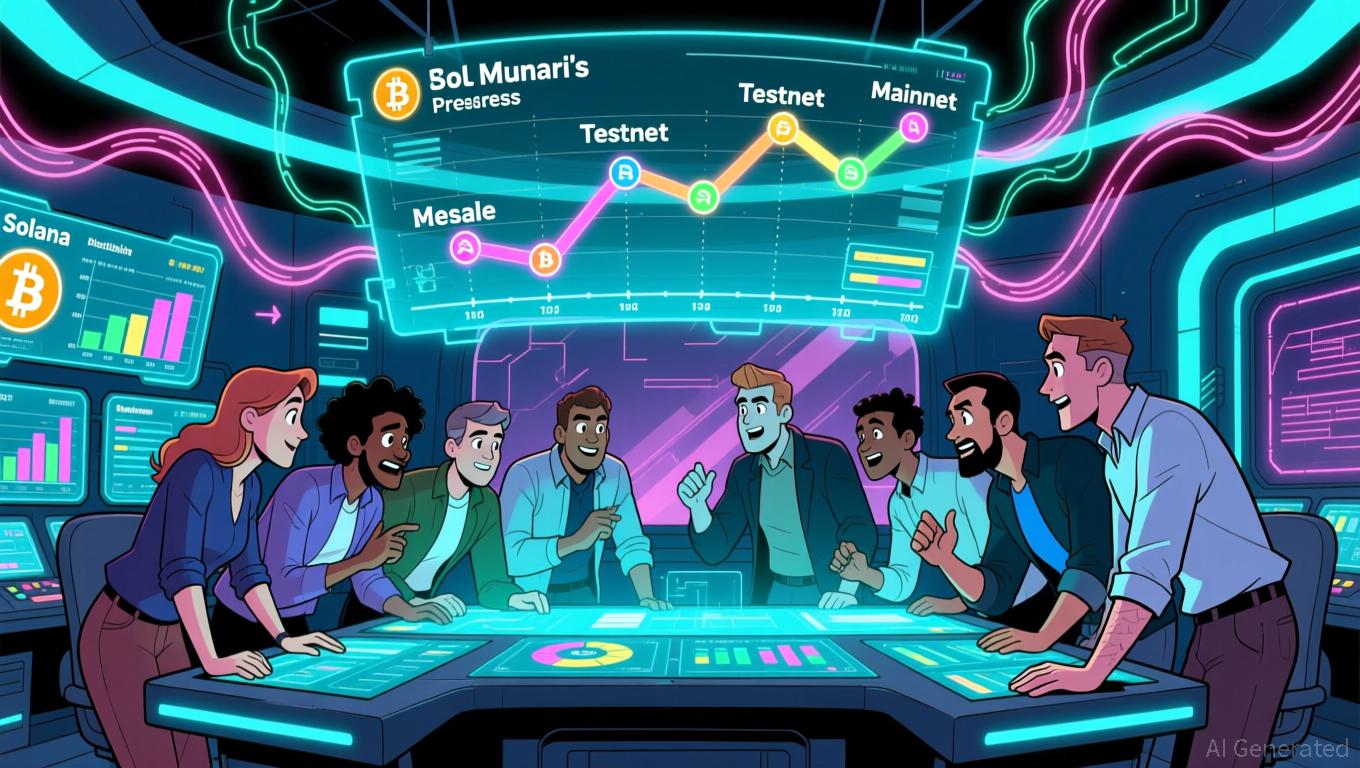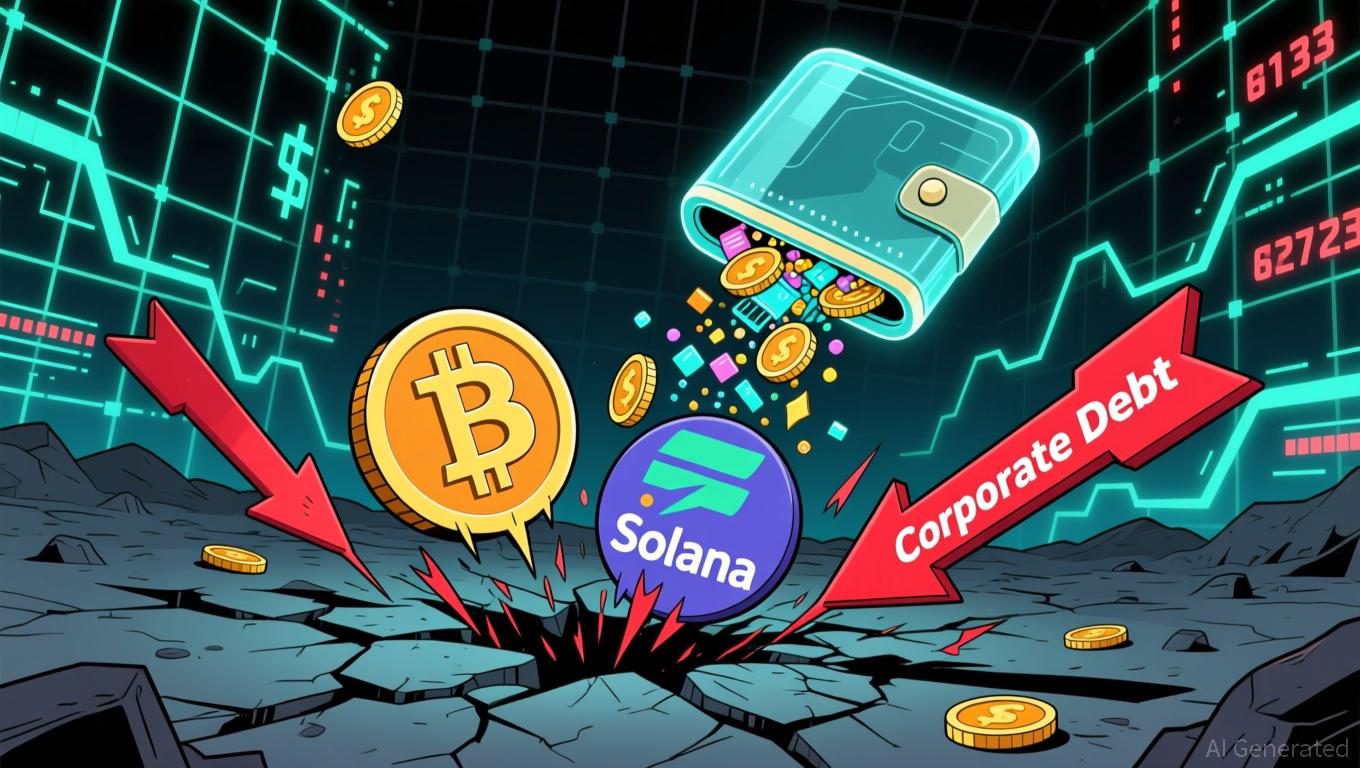Vitalik Buterin's Latest Remarks on ZK and Their Impact on Ethereum's Prospects: Key Investment Prospects in Zero-Knowledge Technology
- Vitalik Buterin positions zero-knowledge (ZK) technology as Ethereum's foundational pillar for privacy, scalability, and security in 2025. - His three ZK pillars include private account abstraction, cryptographic synergy (MPC/FHE/TEE integration), and modexp replacement to reduce computational overhead. - ZK infrastructure now holds $28B TVL, with projects like zkSync, StarkNet, and ZKP leading adoption through EVM compatibility and hybrid on-chain/off-chain models. - Investors gain opportunities in ZK p
Buterin’s Perspective: Privacy, Scalability, and Robustness
Buterin’s latest focus on ZK technology revolves around three main areas: private account abstraction, integration with advanced cryptographic solutions, and enhancements in scalability.
Private Account Abstraction: Buterin believes ZK proofs should empower users to manage their assets confidentially, without revealing wallet addresses. This would establish a universal authorization system for both on-chain and off-chain platforms, effectively separating identity from transaction details
according to Buterin's vision. This change would make privacy widely available, accessible from both desktop and mobile devices, eliminating the need for deep technical skills.Cryptographic Synergy: Buterin supports merging ZK proofs with multi-party computation (MPC), fully homomorphic encryption (FHE), and trusted execution environments (TEE). This combination could create systems resistant to coercion, where
sensitive data remains encrypted even during computation. For instance, FHE would allow ZK proofs to process encrypted data, while TEEs could validate computations within secure hardware, increasing trust and security.Scalability via Modexp Replacement: A technically significant proposal is to substitute Ethereum’s old modular exponentiation (modexp) precompile. This function, crucial for ZK-rollups and ZK-EVM proofs, currently increases computational requirements by up to 50 times. By rewriting modexp in EVM code—even if it means higher gas costs—Buterin’s goal is to make ZK operations more efficient, lowering network strain and speeding up adoption
according to Buterin's proposal.
ZK Infrastructure: From Concept to Practical Use
The ZK infrastructure within Ethereum is advancing quickly. By 2025,
Top Investment Prospects
zkSync Era: This initiative provides EVM compatibility and cuts DeFi transaction fees by more than 90%, positioning it for widespread use. Its emphasis on developer tools and intuitive interfaces matches Buterin’s goal of making privacy accessible
according to market analysis.StarkNet: Using STARK proofs,
StarkNetdelivers high throughput suitable for industrial applications while ensuring transparency. Its applications in decentralized finance and enterprise solutions make it a frontrunner in ZK scalabilityaccording to industry reports.Polygon zkEVM: By reducing in-game transaction fees from $2–3 to less than $0.05, Polygon has become attractive to blockchain gaming and NFT projects. Its compatibility with EVM and collaborations with leading studios make it a key player for ZK adoption in the Web3 space
according to market analysis.
Investor Strategies and Insights
The evolving ZK landscape requires a thoughtful investment approach. Projects like ZKP, which blend hardware infrastructure with on-chain functionality, represent a new category of foundational assets. Unlike purely speculative tokens, these projects generate income through computing resources and transaction fees, providing a buffer against market swings
For those looking to invest, the focus should be on projects with proven technology, real-world collaborations, and alignment with Ethereum’s future plans. Buterin’s comments are not just theoretical—they provide concrete guidance for the blockchain’s next chapter.
Summary
Vitalik Buterin’s vision for ZK technology is propelling Ethereum’s progress. By emphasizing privacy, scalability, and cryptographic strength, he has charted a clear course for the network’s future. For investors, the real potential lies in backing infrastructure projects that bring this vision to life. As the ZK sector continues to develop, early supporters of platforms like zkSync, StarkNet, and ZKP will be in a strong position to benefit in a world where privacy becomes the norm rather than the exception.
Disclaimer: The content of this article solely reflects the author's opinion and does not represent the platform in any capacity. This article is not intended to serve as a reference for making investment decisions.
You may also like
Bitcoin News Update: Innovative Tokenomics and Interoperable Cross-Chain Features: The Key to Altcoin Success in 2025
- 2025 altcoin market highlights Bitcoin Munari (BTCM), XRP Tundra, and Mutuum Finance (MUTM) leveraging multi-chain infrastructure and structured presales. - BTCM's fixed-supply model ($0.35 presale) and Solana-based SPL token deployment aim for 2027 Layer-1 migration with EVM compatibility and privacy features. - XRP Tundra offers cross-chain yield via dual-token system (TUNDRA-S/X) with $0.214 Phase 12 pricing and audited Cryo Vaults for Bitcoin holders. - Mutuum Finance (MUTM) nears 99% Phase 6 allocat

Bitcoin Updates: Institutional Funds Move: AI ETFs Gain Momentum Amid Growing Crypto Debt Issues
- Bitcoin and Solana face renewed selling pressure as digital asset treasury companies (DATCos) offload holdings amid $42.7B corporate debt inflows into crypto. - DATCos, underwater on $126K Bitcoin peak investments, approach parity in market-to-net-asset-value ratios, triggering 40% Solana treasury value declines since October. - Institutional capital shifts toward AI ETFs (e.g., Global X AI ETF) as firms prioritize AI infrastructure investments over crypto, linking performance to tech stock volatility. -

Fed Policy Split Drives Derivatives Activity as Crypto Teeters on Brink of Easing
- Fed policy uncertainty drives derivatives bets, with CME FedWatch pricing 69.7% chance of 25-bp December rate cut amid mixed inflation and labor data. - Crypto markets anticipate easing cycle, but remain fragile as Crypto Fear & Greed Index hits "extreme fear" level 14 despite Coinbase's bearish odds assessment. - Crude oil drops on U.S. Ukraine peace plan and OPEC output hike, while dollar strength compounds risks for rate-cut-sensitive commodities. - CME Group faces scrutiny after $2M insider sale, yet

Modern Monetary Theory and the Valuation of Cryptocurrencies: Do MMT Principles Support Rapid Increases in Token Prices?
- 2025 analysis explores whether Modern Monetary Theory (MMT) can justify Momentum (MMT) token's 1,300% price surge. - Token's rise stems from Binance airdrops, U.S./EU regulatory clarity, and institutional investment, not MMT principles. - Academic research highlights crypto valuation duality: network effects coexist with speculative behavior driven by heterogeneous expectations. - MMT influences macroeconomic frameworks (CBDCs, fiscal policy) but fails to predict token-specific surges dominated by retail